Cuautla, Morelos 作者: 来源: 发布时间:2021-11-17
1. Population and Area
Pop: 154,358 (city)
Area: 153.65 km2 (munip.)
Elev: 1294 masl
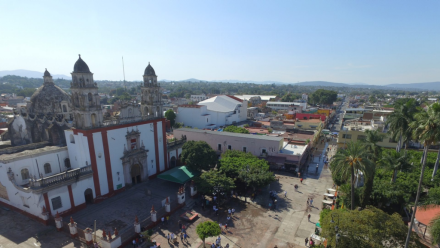
2. Natural geography
Nature and weather
Orography and hidrography
Its orography is presented in three types of relief that are rugged zones (7% of the surface), seminal zones (32% of the surface) and flat zones (61% of the surface).
The main elevations of the municipality are: the Calderón hill (located to the west of the municipality) and the Hospital hill that separates the Cuautla and Yautepec valleys.
The hydrography is made up of the Cuautla River, which is born in the ecological protection zone of "Los Sabinos, Santa Rosa and San Cristóbal", which was decreed as such on March 31, 1993, with an area of 152-31- 28 hectares.
Flora and fauna
Cuautla has a great variety of fruit trees, among which stand out the nanche, guava, banana, lemon, guaje, tamarind, plum, sapote, among others; It also has ornamental plants, which are in nurseries and greenhouses with special care and serve as ornaments; Among these types of plants you can find guayacán, bougainvillea in all its colors and varieties, ferns, jacarandas, palm trees, ficus, and more.
Likewise; During the winter season in Cuautla and many parts of Mexico good night flowers are produced, which are red (the most traditional and popular), pink, and yellowish-white. These types of flowers are popular for referring to Christmas, and also; You should not give them the sun to prevent them from drying out.
In Cuautla you can find medicinal plants such as lollipop, rue, eucalyptus, and muicle. And on the vegetables, there are spinach, quintoniles, chayotes, nopales, quelites, corn, radishes, spearmint, and many more.
Regarding the fauna, Cuautla has different species of animals, that like the fauna, the fauna changes from place to place, due to the climate, and the region. The branch that deals with the distribution of fauna is "zoogeography". Among the main animal species in Cuautla, you can find ducks, chickens, pigeons, turkeys, chickens, and sparrows; there are also fish and batrachians; as well as a variety of reptiles among which snakes, iguanas, and lizards stand out.
http://www.cuautla.mx/flora-y-fauna
Köppen Classification: Tropical Savanna Climate
Tropical savanna climates have monthly mean temperature above 18°C (64°F) in every month of the year and typically a pronounced dry season, with the driest month having precipitation less than 60mm (2.36 in) of precipitation. In essence, a tropical savanna climate tends to either see less rainfall than a tropical monsoon climate or have more pronounced dry seasons than a tropical monsoon climate. Tropical savanna climates are most commonly found in Africa, Asia and South America. The climate is also prevalent in sections of Central America, northern Australia and North America, specifically in sections of Mexico and the state of Florida in the United States.
The Köppen Climate Classification subtype for this climate is "Aw". (Tropical Savanna Climate).
The average temperature for the year in Cuautla is 69.3°F (20.7°C). The warmest month, on average, is May with an average temperature of 74.7°F (23.7°C). The coolest month on average is January, with an average temperature of 64.2°F (17.9°C).
The highest recorded temperature in Cuautla is 102.2°F (39°C), which was recorded in February. The lowest recorded temperature in Cuautla is 32.0°F (0°C), which was recorded in January.
The average amount of precipitation for the year in Cuautla is 34.1" (866.1 mm). The month with the most precipitation on average is June with 7.6" (193 mm) of precipitation. The month with the least precipitation on average is February with an average of 0.2" (5.1 mm). In terms of liquid precipitation, there are an average of 91.1 days of rain, with the most rain occurring in August with 17.6 days of rain, and the least rain occurring in December with 0.8 days of rain.
http://www.weatherbase.com/weather/weather-summary.php3?s=917005&cityname=Cuautla%2C+Morelos%2C+Mexico&units=
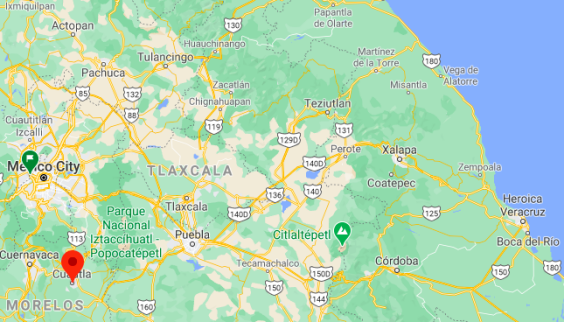
Getting there and around
Get there
By car – It takes approximately 1h 27m to drive from Mexico City to Cuautla. The distance between Mexico City and Cuautla is 72 km. The road distance is 102.7 km.
By bus – The best way to get from Mexico City to Cuautla without a car is to line 2 subway and bus which takes 1h 49m and costs .
Riseshare – The cheapest way to get from Mexico City to Cuautla is to rideshare which costs $91 and takes 1h 47m. Check out Blablacar's carpooling service for rideshare options between Mexico City and Cuautla. A great option if you don't have a driver's licence or want to avoid public transport.
https://www.rome2rio.com/s/Mexico-City/Cuautla
Car Rental – To explore Mexico’s provincial towns and cities—including its beach locations and the scenery and attractions near them— consider renting a car for your visit. Having your own car will give you more flexibility than using public transport options and, in some cases, offer you access to places which are otherwise difficult to visit without the use of a car.
COVID19 – International entry into Mexico from United States
Allowed for: All visitors arriving by air. Mexico land borders are closed to non-essential travel
Restricted for: There are no current restrictions.
Get around
Local Buses – Local buses and mini-buses (combis or micros) are available locally for a fraction of the cost of a taxi around town. You need to speak Spanish to be able to ask for directions or ask the driver to tell you where to get off.
Taxis – Taxis in most of Mexico’s towns and cities are not metered, so agree your price before you get in. Taxi travel is very affordable in Mexico, in comparison to the USA, Canada and Europe, and so provides a viable means of public transportation in Mexico. Your hotel can arrange taxis for you; some post their rates on a board in the lobby; taxi hotel rates are usually higher than cabs you hail off the street. If you speak Spanish, you will have a distinct advantage and be able to negotiate a price with the driver.
Uber is expanding rapidly across Mexico and now offers services in cities across the country, including: Mexico City, Toluca, Cuernavaca, Puebla, Querétaro, León, Aguascalientes, San Luis Potosí, Guadalajara, Monterrey, Hermosillo, Tijuana, Mexicali, and Mérida. Uber has been adding Mexican cities to its network every year, check for availability when you arrive at your destination in Mexico.
Cabify and Didi are also developing and currently operate in cities including Mexico City, Toluca, Monterrey, Puebla, Querétaro and Tijuana. Check for availability in the city you are visiting.
These services offer people with smartphones a way to book a cab through a mobile app for a pre-agreed price. Fares are comparable with Sitio type cabs, and sometimes trade at a premium to this when local demand increases.
https://www.mexperience.com/transport/taxi-travel-in-mexico/#51
3. ECONOMY
GDP: 40,861 M MXN (2010)
https://imco.org.mx/ciudades2010/ciudades/28_Cuautla.html
4. Industry characteristics
Among the most important activities in Cuautla you will find:
Agriculture (corn, beans)
Livestock (beef, pork)
Nursery (production of ornamental plants and fruit trees)
Aquaculture (production of aquatic species such as mojarras, prawns, and catfish)
Agroindustry (sugar cane)
General Commerce (financial, administrative and real estate services, premises such as stationery, grocery, food, beverages, etc.)
Services (hotel, restaurant, professional, technical, and personal)
Tourism (natural areas, lodging, restaurants, bars, nightclubs, water parks, spas, and springs.)
Construction.
Manufacturing.
The Cuautla Industrial Park, located in Ayala, covers 130 hectares (320 acres) and is the second largest in Morelos. Most of the companies are related to the automotive industry. The largest employers are Saint-Gobainl, (glass), Sekurit (windshields), and Temic (industrial parts).
Key project: Cable car on the banks of the Cuautla river
Raúl Aguilar Montiel, secretary of Public Works, Urban Development and Environmental Protection, stated that within the Metropolitan Fund, which has a resource of 300 million pesos, a project for the construction of a Cable Car was presented, which will be located along the riverside of the Cuautla River, and that in addition to being a sustainable project will be to attract national and foreign tourism.
So far there is no calculated investment, as that will be known until the project is ready and can be made known to public opinion, once it is authorized.
The objective is to attract national and foreign tourism, as well as to give the value it deserves to this protected natural area of the Cuautla River, thereby protecting the environment.
It is planned to start at Los Arcos until reaching the San Pedro Apatlaco bridge, in the municipality of Ayala, crossing the entire shore of the Cuautla River, with stops at strategic places so that tourists can make tours of the protected area. and admire the natural beauties offered by this important tributary.
The construction of the Cable Car, which will be laid along the entire bank of the Cuautla River, connecting the municipalities of Yecapixtla, Cuautla and Ayala, is a project contemplated within the Metropolitan Fund, and its objective is to reactivate tourism in each of the mentioned localities.
https://www.elregional.com.mx/presentan-proyecto-de-construccion-de-teleferico-en-la-ribera-del-rio-cuautla
5. Attractions
Church of Santo Domingo de Guzmán
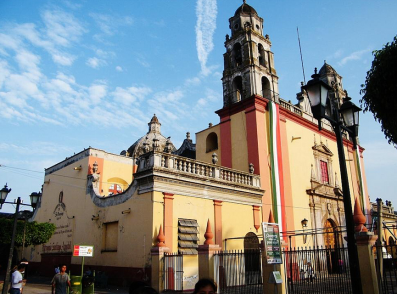
The most important symbol of Centro Histórico de Cuautla is the Church of Santo Domingo de Guzmán, it is located in the main square and, although its facade has been modified, it is still one of the symbols of the city since the 16th century.
The Templo de Santo Domingo (Temple of Saint Domingo), as it is better known by the people of the city, was built along with a convent in which the Dominican friars lived in isolation.
Although it is still in good condition, it has witnessed events as transcendental as the Sitio de Cuautla, since it served as the fort of General Leónardo Bravo during the independence of Mexico. It was also the headquarters of Emiliano Zapata's army at the beginning of the 20th century.
Another church and ex-convent you should know is San Diego, dating from the 17th century. Its tower is one of the symbols that can be seen from various points of the city.
Follow your journey to the Chapel of Gualupita or Guadalupita, which was founded as a refuge to protect the image of el Señor del Pueblo de Xochitengo (The Lord of the People of Xochitengo), highly valued by the inhabitants of Cuautla in the 17th century. In 1812 it was moved to another sanctuary and an image of the Virgin of Guadalupe was installed in its place, hence the name by which it is known today.
Cuautla’s Museums
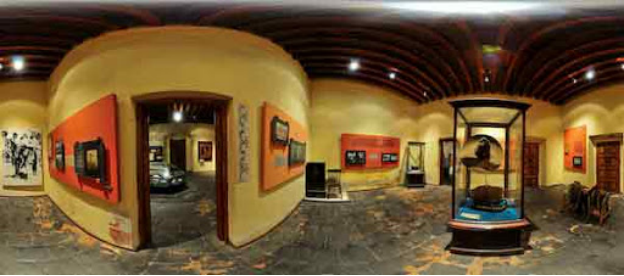
Cuautla's cultural offer is rich, so we recommend visiting the Museo del Oriente de Morelos (Museum of the Orient of Morelos) also known as Casa de Morelos (House of Morelos). This is a space dedicated exclusively to the life and work of this independence figure, since he lived there for a while.
It is also worth visiting the Casa de la Cultura (House of Culture), which was originally a private academy that became the Instituto Regional de Bellas Artes de Cuautla (Regional Institute of Fine Arts of Cuautla) at the end of the 1950s.
A good way to learn about the history of this city is by observing the murals of the Salón de Cabildos of the Palacio Municipal (Municipal Palace), these tell how the Sitio de Cuautla was and you will find characters such as Morelos, Galeana, Matamoros and the Niño Artillero.
In this building you can also find the Campana de Nuestra Señora de los Dolores (“Bell of Our Lady of Sorrows”) that dates back to 1784 and is played during the Grito de Dolores every September 15th.
You can plan your visit to coincide with one of Cuautla's many popular festivals; for example, the Señor del Pueblo de Xochitengo festival which takes place on the second Friday of Lent and includes a very popular fair with typical food and dances. From February 19th to May 2nd the Sitio de Cuautla is commemorated with a cycle of cultural and artistic activities.
Cuautla’s Spas
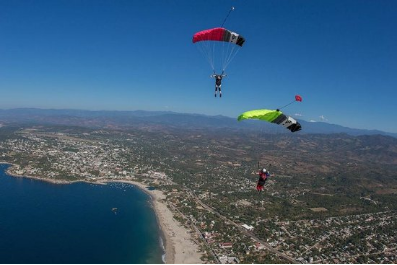
Cuautla's climatic conditions have made it a city to rest and take advantage of its warm temperatures, and it also has many spas to cool down and spend a very pleasant day with the family.
Agua Hedionda is a spa known for the natural properties of its thermal waters, thanks to its proximity to the mineral deposits that were explored for centuries in the region.
In El Almeal you can bathe in its two warm fresh water springs. Other options are Los Limones, Agua Linda and Las Tazas, in all of which you will find splashing pools so that children can have fun safely, as well as slides and areas for practicing other sports.
The spas are open to the public all year round thanks to Morelos' excellent climate, although it is common for them to receive more visitors on weekends, during holiday breaks or in summer.
The more adventurous will get to know Cuautla very well as a destination to practice skydiving once in a lifetime or in a professional manner. Different companies and academies offer this service which is carried out with all the security measures.
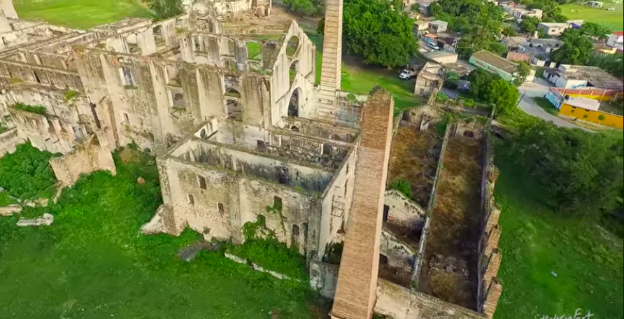
What to do in Cuautla on a Weekend
https://youtu.be/R5b7_xffZSs
6. History
Prehispanic History
The Olmec group who lived in Chalcatzingo (southeast of Cuautla) founded settlements in Cuautla, Tepalcingo, Jonacatepec (Las Pilas), Olintepec, Atlihuayan, Huaxtepec, Gualupita de Cuernavaca, Tlayacapan, etc. (Piña Chan y Plancarte).
Five years after the conquest of Cuahunahuác (Cuernavaca) in (1379 CE), Moctezuma Ilhuicamina conquered Huaxtepec (Oaxtepec), Yautepec, Tlayacapan and other towns of Morelos and Guerrero. With Huaxtepec, which was the prehispanic and colonial capital of the peoples of the Plan de Amilpas, its 25-human settlements including Cuauhtlán, had to pay a tribute of 400 cotton blankets, 400 two-color valances, 400 bedspreads, 800 thin cotton blankets, 400 pairs of shorts (patees), 200 women's shirts, and 1,200 veils (mantillas) every 80 days. In addition, they were required to contribute labor.
Spanish conquest and colonial period
The Plan de Amilpas including Cuautla was conquered by Captain Gonzalo de Sandoval on March 14, 1521. In 1543 New Spain was organized into four provinces: Michoacán, México, Coatzacoalcos, and Las Mixtecas; the present territory of Morelos was part of the Mexico province.
The church and monastery of San Diego were built between 1560 and 1580. The church is relatively small and austere, although there is a beautiful cupola on the south side. The façade of the church is made of pink granite with well-defined bases, columns, and cornices. The small, two-level belltower is square and simple. The monetary is high and formal; it may have been built after the church. The church is unique in that it faces the east, there is no real atrium, and there are neither capillas posas nor an open chapel. Construction of the church of Santo Domingo also began in the middle of the 16th century, but there is little information on it.
After the conquest, Indigenous lands were confiscated, mostly for sugar cane plantations and mills (trapiches). Despite Indigenous protests, Viceroy Gaspar de Zúñiga ruled in favor of the colonists on July 5, 1603. In 1646 the province of México became the Real Audiencia; Cuautla became an alcaldia (mayoralty) belonging to the Intendencia of Puebla.
Independence & 19th Century
After a number of successful battles, General José María Morelos arrived in Cuautla in December 1811. On February 19, 1812, Spanish General Félix María Calleja began the 72-day Siege of Cuautla. Morelos was accompanied by Leonardo Bravo, Mariano Matamoros, Hermenegildo Galeana, Nicolás Bravo, and Manuel de Ordiera. 12-year-old Narciso Mendoza, known as the Niño Artillero (Child Gunner) is remembered for stopping an advance of royalist troops by setting off a cannon. Morelos and his army were able to break out on May 2, 1812.
Cuautla was designated a Heroic City (Heroica Ciudad de Morelos) on April 4, 1829, while Felipe B. Montero was Presidente Municipal (mayor).
An 1865 photograph shows the construction of the second floor of the Palacio Municipal (city hall) in 1865. The building was burned during the Revolution.
The railroad station was opened on June 18, 1881, next to the Convento de San Diego. Tourist trains continue to operate along the line.
Revolution & 20th Century
As a young man, Emiliano Zapata was concerned about land seizures in Anenecuilco, his hometown. In May 1911 he answered Francisco I. Madero's call to arms against President Porfirio Díaz. After minor battles in Chietla, Izúcar, Metepec Atlixco, Yautepec, and Jonacatepec, he arrived at Cuautla on May 11, 1911. With 4,000 or 5,000 troops he surrounded the city, and the week-long Battle of Cuautla (1911) began. The battle was a major turning point in the Mexican Revolution, as Porfirio Díaz said the battle convinced him to sign the Treaty of Ciudad Juárez and resign.
Nearly seven years later, in April 1919, Colonel Jesus Guajardo assassinated Zapata, apparently under orders of President Venustiano Carranza in Hacienda Chinameca, Ayala. His body was placed on a mule and left on the street before he was brought to Cuautla for burial.
The city hall was burned during the Battle of Cuautla in 1911; the bell Nuestra Señora de Dolores was transferred from the Church of Guadalupita on February 19, 2917 when the city hall was restored.
21st Century
Six people, including an 11-year-old child, were killed in the September 17, 2017 Puebla earthquake.
Jesus Corona Damian of Juntos Haremos Historia (Together we will make history coalition) was elected Presidente Municipal (mayor) in the election of July 1, 2018.
Tetelcingo was scheduled to become an autonomous municipality on January 1, 2019, but Cuautla authorities objected.
As of May 4, 2020, there were 505 infections and 59 deaths in the state of Morelos and 62 confirmed infections from the COVID-19 pandemic in Cuautla. Schools and many businesses were closed from mid March until June 1. On June 2, Cuautla reported 224 confirmed cases and 34 deaths from the virus; the reopening of the state was pushed back until at least June 13. Cuautla reported 816 cases, 650 recuperations, and 138 deaths as of August 31.
7.Contact Information
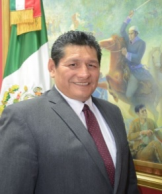
City Mayor: Jesús Corona Damián
Phone number: +52 (735) 354 8999
Facebook: https://www.facebook.com/JesusCoronaDamianCuautlaOficial
Twitter: https://twitter.com/JesusCoronaDam7
Website: http://cuautla.gob.mx/tu-municipio
Govt. Office Address: Portal Morelos 1, Col. Centro, C.P. 62740, Cuautla, Morelos
